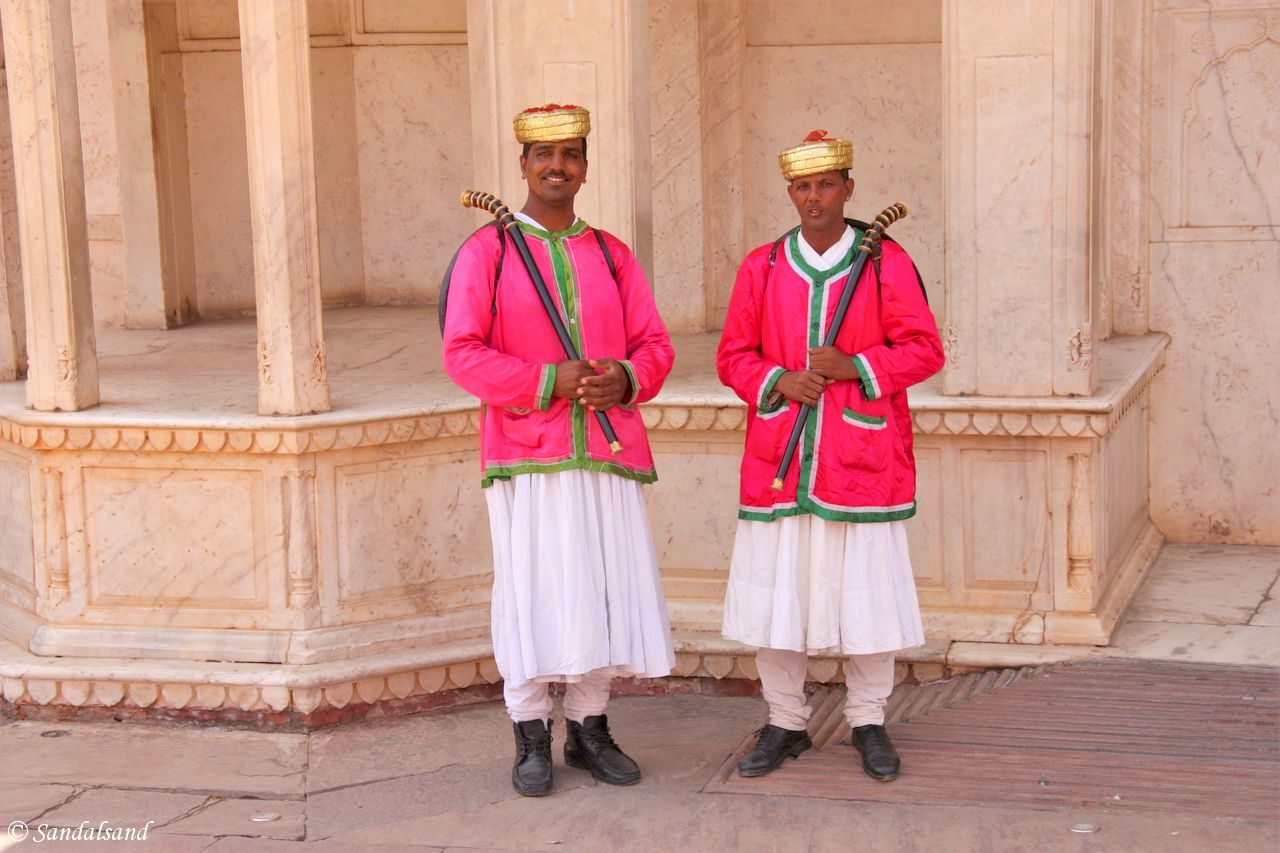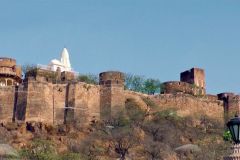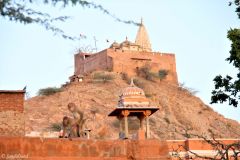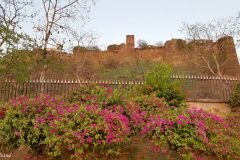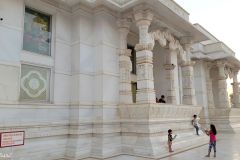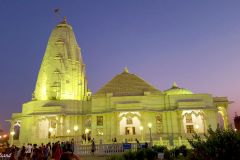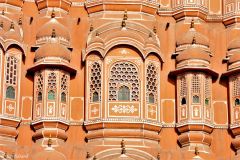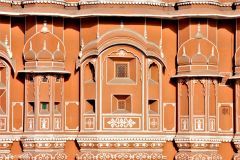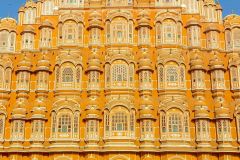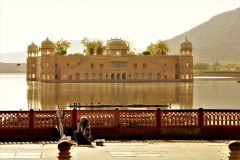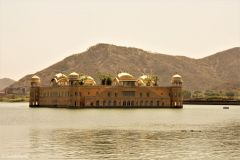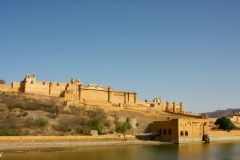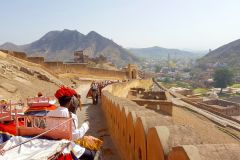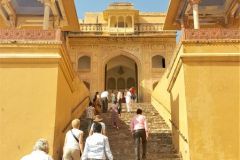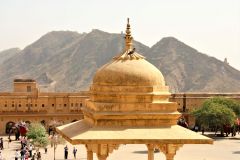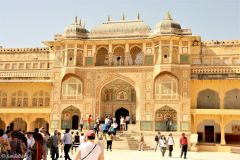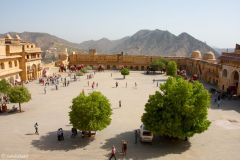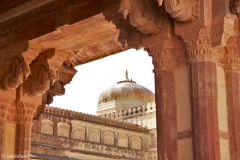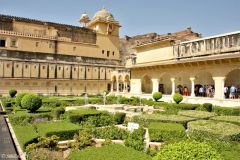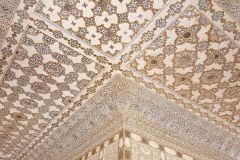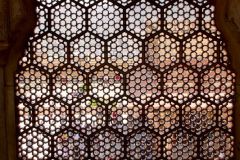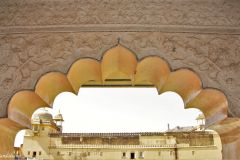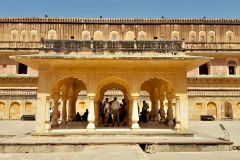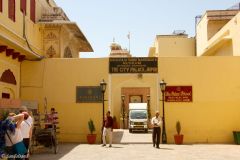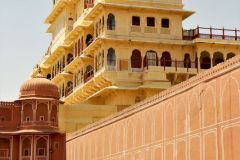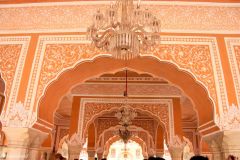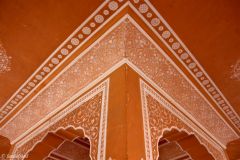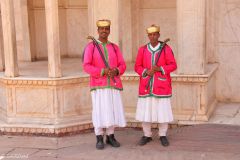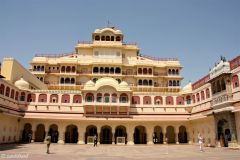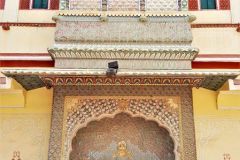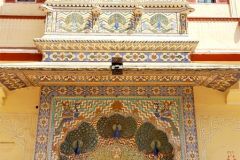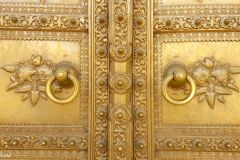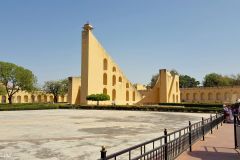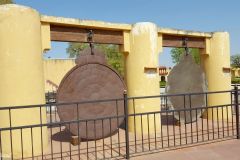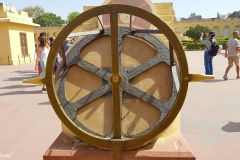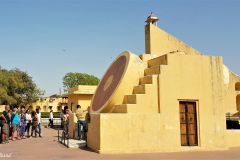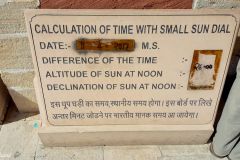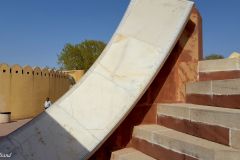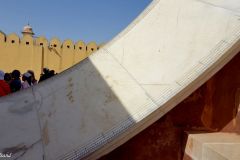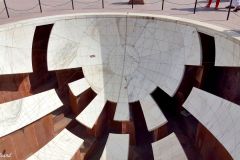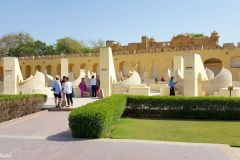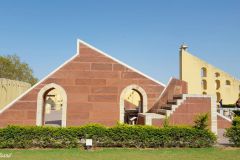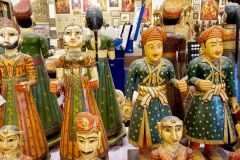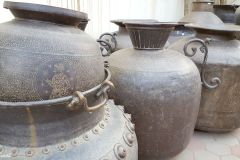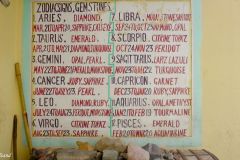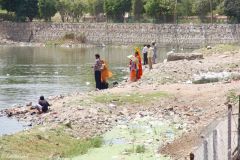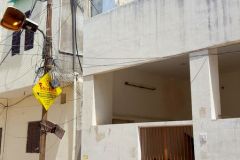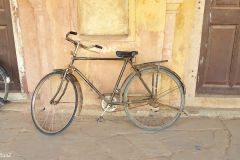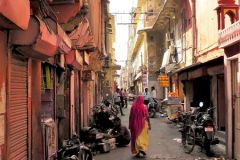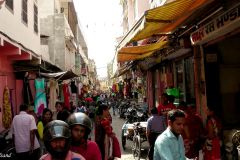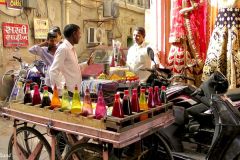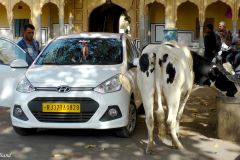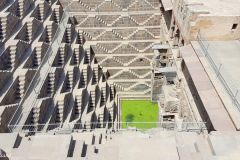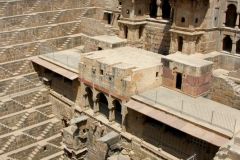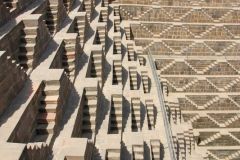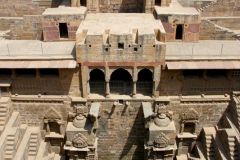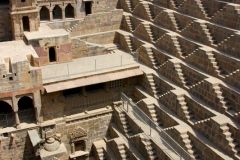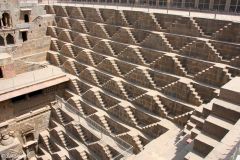Read about the sights in Jaipur, the capital of Rajasthan. This was my second stop on the Golden Triangle of India, the extremely popular tour for most first-time visitors to India. There is a lot to discover, more than you will be able to absorb during your short stay.
I was on a tour, unlike the traveller I would like to think I am. On the other hand it was an easy way into the hustle and bustle of India, and I got to discover a lot during my week on the road with a group of fellow Norwegians. The Golden Triangle consists of Delhi, Jaipur and Agra – links are to my articles. I will be presenting sights in Jaipur, inside and out, almost in chronological order. We spent two nights here. The impressions are scarcely promoted in words, I am during this series of articles from India, relying on pictures. Sometimes they speak larger than words.
Moti Doongri Fortress
Upon entering the city one easily takes notice of a fortress on a hilltop. It was originally built in 1761 but was later expanded with a small palace imitating a Scottish castle. There is also a Hindu temple inside. We only saw it from below as it was not on the priority list of my tour agency. To some extent the two monkeys in front gave a more lasting impression.
Birla Mandir
This is one of several Birla Hindu temples across the country. It is in fact not as old as one would expect. It was constructed in 1998 on an elevated stand in between the Moti Doongri Fortress hill and one of the main thoroughfares of Jaipur. The white marble structure seemed to be very popular at sunset, when we arrived. It gets lit up in the evening giving the white marble a greenish look, quite nice actually.
Hawa Mahal (Palace of Winds)
Jaipur is often called the Pink City and the front of this building explains why. It was constructed 1799 by a maharajah to allow the ladies of his court (his harem) to watch city life outside without being seen by ordinary people. It looks like a beehive and raises five storeys high above the busy street. There are 953 windows, many made of lattice work by stone masons. We only made it to the front, shown on the pictures below. It is also possible to get inside the palace proper and climb to the top for the best views of the city.
Jal Mahal (Water Palace) – Man Sagar Lake
One of the main sights of Jaipur, the Amer Fort, is located 8 km north of the city. On the way we pass by the Man Sagar Lake and the magnificent Jal Mahal near the shore. It looks as if it floating, or being semi-submerged in the lake. It was built some time in the 18th century by a maharajah using it for duck hunting parties. There are not really any habitable rooms to stay, it is more lake a terraced garden structure. Four of the five floors are are submerged in the lake when it is full. It serves as a reminder of the extreme wealth of the ruling class in Rajasthan.
Amer Fort
There are several forts around the province which have been inscribed on UNESCO’s World Heritage List. The Amer (Amber) Fort is the largest, grandest and most visited. Most visitors are taken up to the fort’s central complex, with its numerous courtyards and palaces, on elephants. There have unfortunately been stories about maltreatment of the animals and some members of my group preferred to walk. Nonetheless, the complex is a definite highlight on a visit to this part of the country.
Read my special article about this Heritage Site (and see more images):
#0247 – Hill Forts of Rajasthan: Rajasthan’s forts are preserved manifestations of the immense powers held by the maharajahs of the Rajput kingdoms from the 8th to the 18th centuries.
City Palace
This huge complex consists of several courtyards, palaces and other buildings right inside the old part of Jaipur. Some parts have been converted to a museum open to the public, but some are still under private ownership. The construction of the complex date back to around 1730 but it evolved gradually over the centuries. The maharajah who built it, Jai Singh II, had decided to shift his capital from Amer (Amber) to Jaipur.
The palace is part of a World Heritage Site comprising a larger area in the old city centre. Read my special article about this World Heritage Site:
World Heritage #1605 – Jaipur City, Rajasthan: Jaipur, unlike other medieval cities of the region, was deliberately planned as a new city on the plains. It was meant to be open for trade as opposed to the hilly terrain and military cities of past. Still, its planning ensured a response to the surrounding hill tops in all directions.
Jantar Mantar
Our next stop on this tour of sights in Jaipur, is situated very close to the City Palace and the Hawa Mahal described above. The Jantar Mantar is another World Heritage Site in Jaipur, of a totally different character. Maharajah Jai Singh II constructed five of the kind (in New Delhi, Jaipur, Ujjain, Mathura and Varanasi) between 1724-1735. The one in Jaipur is the largest of them and best preserved. Their function was to serve as observatories using a number astronomical instruments. Here we find 19 large scale instruments, including the world’s largest stone sundial. It was a thoroughly fascinating place to visit.
Read my special article about this World Heritage Site:
#1338 – The Jantar Mantar, Jaipur: The astronomical instruments on this site are impressive due to their 300 years of age as well as the accuracy in which they show time and the movements of stars and planets.
Handicraft workshops
If you join a group on a tour, the guide was always make a stop or two at a workshop, or a regular shop. He receives his commission if we buy anything, we get the opportunity to leave some money behind and get an introduction to whatever they are producing. We made two such stops in Jaipur, one to a carpet maker and in reality a dealer in every kind of handicrafts sold on behalf of workers living in villages in the districts around Jaipur. In addition we went to a jeweller, watched the very manual process and walked into the very modern jewellery store.
I do not believe our group were the best customers they’ve had, and some of us rather fancied a cold beer to the gem stones on sale.
Everyday life, today
For some reason tour guides all over the world tend to believe that visitors are only interested in ancient structures like palaces and fortresses, or eager to learn about a particular line of kings. Some of us have reason to believe that not all people of Jaipur are living in city palaces, that there is a contemporary life away from the palace gates. On this trip to India I had sadly enough very little time on my own to look around.
Abhaneri – Chand Baori stepwell
We have arrived at the last of the interesting sights in Jaipur. After a good breakfast at a good hotel we left Jaipur and headed to Agra. On the way we stopped two places and I’ll mention the first in this article. In a village called Abhaneri we found a stepwell by the name of Chand Baori. What is a stepwell? It is basically a well with steps leading down to the surface of the water. Rajasthan is an arid province and water may have been hard to come by and conserve. Digging a well like this made a secure access to water, it kept the water under an air temperature 5-6 degrees cooler than on top of the steps.
This particular well is more than a thousand years old, it is 30 metres deep and 3500 steps down 13 storeys or levels. It not only served as a water basin but also has a royal pavilion and a temple inside.
What more?
That was a short introduction to sights in Jaipur. Never mind which hotel we stayed in. We even ate there. I have mentioned and linked to the special articles from the World Heritage sites above. Read the introduction to this vacation in India’s Golden Triangle. The first article was about the first stop in the triangle, Delhi. Jaipur was the second. The third was Agra.
